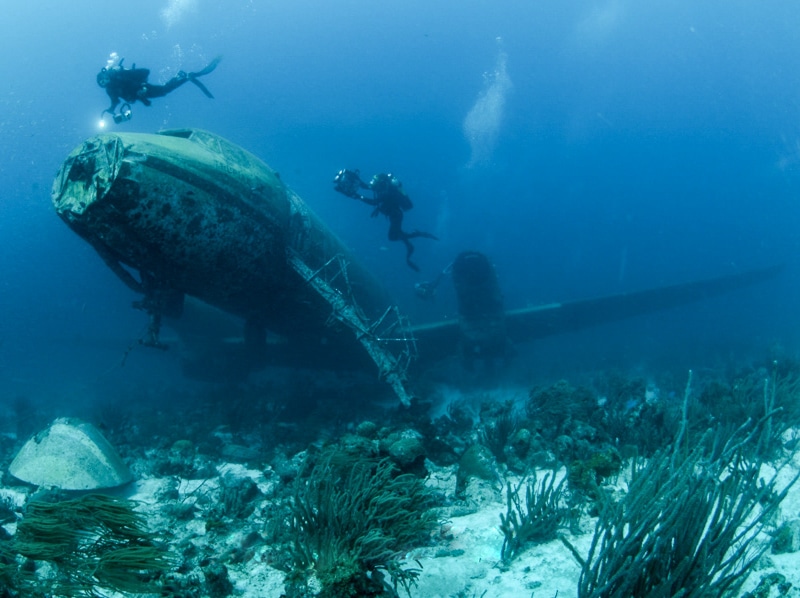HIGHLIGHTS





Get Your Bearings
Aruba is known for its perfect weather and legendary beaches—near-endless stretches of alabaster sand kissed by sparkling warm seas, and hugged by the wind-curved trunks of fofoti trees. It may be a tiny island, but Aruba packs a ton of fun and sun into just 70 square miles.
Venture beyond the sand and you’ll discover so much more. A sea full of life and shipwrecks. Pastel streets lined with fine dining, shows, casinos, shopping, and vibrant nightlife. An authentic, inviting culture. There’s no shortage of fun things to do in Aruba, it’s just a matter of finding which ones make you happiest.
Natural Wonders
Aruba is an island paradise blessed with an abundance of natural goodies found nowhere else.
Explore the calm sandy stretches of the west coast and the towering bocas to the north. Climb the windswept steps to the peak of Hooiberg Hill, Aruba’s iconic mountaintop forged by ancient volcanoes, and jump into the cools waters in Santa Cruz.
From towering green cacti, limestone cliffs, water-worn caves, and natural pools, Aruba is a kaleidoscope of natural wonders.
Arikok National Park
The Arikok National Park is Aruba’s national treasure. Nearly 20% of Aruba is a designated National Park and home to a long list of animal species and plant life. The Arikok National Park is also home to rare gemstones indigenous to the island.
The park is a great place to rent a jeep or scooter and spend the entire day enjoying the dramatic landscapes. Home to a variety of unique attractions and cultural heritage sites, Arikok offers spectacular caves, original Indian rock drawings, unusual land formations made from lava, quartz diorite and limestone.
Two of the most famous sights in the park are just steps away from each other; the Bushiribana Ruins are the remains of a former gold mill right on the rocky coast and curious visitors may discover a hidden nearby ladder descending to a natural ocean pool.
The Arikok caves are also not to be missed. The Guadirikiri Cave is famous for its two chambers, illuminated by the sunlight streaming through holes in the roof of the cave. In the darker portions of the cave nest hundreds of harmless bats.
The Fontein Cave is the most popular of the caves as it is the only one that has the drawings of Arawak Indians on the ceilings, providing a real sense of island history to this cave.
Beachgoers Paradise
Aruba is famous throughout the Caribbean for its glamorous beaches with gleaming white sand and clear jade waters. Thanks to its arid climate, the sea is typically unclouded by runoff and offers great diving and snorkeling, with a scattering of shipwrecks to explore a short distance from shore.
Twisted, wind-sculpted fofoti trees fringe the shores, always leaning to the southwest due to the predominant northeast tradewinds, the same winds that lure windsurfers and kiteboarders from around the world.
The most touristy beaches rim the western and southern shores of the island and offer favorite spots for swimming, snorkeling, sunbathing, and windsurfing.
Venture over to the island’s northeastern side to see the ocean’s power in full force. Here, rubbly cactus-cloaked landscapes stretch to the wave-thrashed shores. The winds howl, whipping up froth-topped waves.
Condé Nast Traveler, Forbes, Travel and Leisure, and Tripadvisor have all named Aruba beaches on their “Best Beaches in the World” lists.
Shipwreck Exploration
Diving in Aruba means you have an extensive list of sites, from swaying gardens of seagrass to landscapes of soft colorful coral, but for the most part, Aruba attracts those in search of shipwrecks.
Antilla Shipwreck
A signature Aruba wreck dive that every visitor adores during their travels. This German Freighter lies on her port side where the bow of the ship faces the Island. The massive ship was purposefully sunk on May 10, 1940 when Germans invaded Holland during the second world war. It is one of the largest wrecks in the Caribbean with it spanning over 400 feet!
Perdernales Shipwreck
Merely 30 feet below the surface of the water, the shallow dive means you have abundant light to capture the perfect shots and is also wonderful for snorkelers. The oil tanker was sunk by a torpedo from a German submarine in 1942 during the second world war.
Divers can explore the ship and see sections of cabins where you can see washbasins, toilets, along with a pipeline system. The wreck has now become a home to many large groups, angelfish, damsel fish, moray eels, and many more critters.
Debbie II Shipwreck
The 120 foot fuel barge is covered with growths of leaf and brain corals. There are areas covered in sponges, and a few sea fans poking through the habitats. There are schools of fish, lobsters, rays, and plenty of turtles swimming around. If you are a fan of sea horses, then make sure to keep an eye out for them at this dive site.
Airplane Wrecks
Not all of the wrecks off the coast of Aruba are ships! One unique dive site features the wrecks of two airplanes. For any diver, this dive site is an exciting opportunity to see coral reefs growing on manmade objects that used to soar from the sky.
The S-11 and DC-3 were intentionally sunk to create an artificial reef many decades ago. Entire ecosystems have developed since their sinking; you can easily swim around the airplanes and take your time to watch the bat fish, angelfish, eels, crabs, shrimps, and more scuttling around.
Oranjestad
Oranjestad, the city capital is a unique blend of old and new that lends a distinctive charm to Aruba’s capital. You will find colorful, vibrant, historic buildings inspired by Dutch Colonial architecture with Caribbean flare. There is plenty of shopping and exploration to be done. Oh, and if your legs are getting tired there’s the free eco-friendly trolleys you can hop on.
The local market is a visitor favorite with 40 buzzing stalls—it’s an ideal spot to find locally made items and affordable Aruban souvenirs. The owners entice local creators to showcase their wares there, so you’ll find unique items like sand art, wood carvings, oil paintings, seashell jewelry, and all manner of cool handmade keepsakes. You’ll also find excellent local fare on site, including BBQ and fresh fruit shakes.
Don’t miss the Bon Bini Festival held every Tuesday showcasing local food, music, and dance at Fort Zoutman.
A Foodie's Wonderland
Of the ABC islands (Aruba, Bonaire, Curaçao) Aruba is by far the most developed and the cuisine is a wonderful blend of Caribbean, Latin American, and Dutch influenced meals, with its own Aruban twist. If you’re passionate about unique international cuisines, Aruba’s mix of modern and traditional, haute and street-style fares cannot be missed.
You’ll definitely not want to miss a casual lunch at Zeerovers, famous for their whopping platefuls of seafood. Meaning “pirate” in Dutch, Zeerovers serves up fresh seafood straight from the sea, and if you arrive early enough, you’ll find local fisherman bringing in the “catch of the day”.
There’s no shortage of upscale dining on Aruba but many have the unique option of upscale on the beach. Barefoot Restaurant is well-known for their tagline “elegant dining in flip flops”, while the Screaming Eagle Lounge is a sea of ambient colored lighting and unique epicurean treats.
Don’t miss out on Keshi Yena, a very traditional Aruban meal, and a must-try on the island. Imagine a large round ball of cheese, stuffed with spicy meat (normally chicken). This meal was influenced by the Dutch so it’s often covered in Gouda. Each restaurant seems to have their own take on this dish so definitely try to taste different variations of it.
To sample all kinds of local products, try to visit the big Santa Rosa Farmer’s Market on the first Sunday of every month.
If you happen to be on island in October, the entire month is Eat Local Month and features lots of specials and culinary events all over the island.









Get Your Bearings
Aruba is known for its perfect weather and legendary beaches—near-endless stretches of alabaster sand kissed by sparkling warm seas, and hugged by the wind-curved trunks of fofoti trees. It may be a tiny island, but Aruba packs a ton of fun and sun into just 70 square miles.
Venture beyond the sand and you’ll discover so much more. A sea full of life and shipwrecks. Pastel streets lined with fine dining, shows, casinos, shopping, and vibrant nightlife. An authentic, inviting culture. There’s no shortage of fun things to do in Aruba, it’s just a matter of finding which ones make you happiest.

Natural Wonders
Aruba is an island paradise blessed with an abundance of natural goodies found nowhere else.
Explore the calm sandy stretches of the west coast and the towering bocas to the north. Climb the windswept steps to the peak of Hooiberg Hill, Aruba’s iconic mountaintop forged by ancient volcanoes, and jump into the cools waters in Santa Cruz.
From towering green cacti, limestone cliffs, water-worn caves, and natural pools, Aruba is a kaleidoscope of natural wonders.

Arikok National Park
The Arikok National Park is Aruba’s national treasure. Nearly 20% of Aruba is a designated National Park and home to a long list of animal species and plant life. The Arikok National Park is also home to rare gemstones indigenous to the island.
The park is a great place to rent a jeep or scooter and spend the entire day enjoying the dramatic landscapes. Home to a variety of unique attractions and cultural heritage sites, Arikok offers spectacular caves, original Indian rock drawings, unusual land formations made from lava, quartz diorite and limestone.
Two of the most famous sights in the park are just steps away from each other; the Bushiribana Ruins are the remains of a former gold mill right on the rocky coast and curious visitors may discover a hidden nearby ladder descending to a natural ocean pool.
The Arikok caves are also not to be missed. The Guadirikiri Cave is famous for its two chambers, illuminated by the sunlight streaming through holes in the roof of the cave. In the darker portions of the cave nest hundreds of harmless bats.
The Fontein Cave is the most popular of the caves as it is the only one that has the drawings of Arawak Indians on the ceilings, providing a real sense of island history to this cave.

Beachgoers Paradise
Aruba is famous throughout the Caribbean for its glamorous beaches with gleaming white sand and clear jade waters. Thanks to its arid climate, the sea is typically unclouded by runoff and offers great diving and snorkeling, with a scattering of shipwrecks to explore a short distance from shore.
Twisted, wind-sculpted fofoti trees fringe the shores, always leaning to the southwest due to the predominant northeast tradewinds, the same winds that lure windsurfers and kiteboarders from around the world.
The most touristy beaches rim the western and southern shores of the island and offer favorite spots for swimming, snorkeling, sunbathing, and windsurfing.
Venture over to the island’s northeastern side to see the ocean’s power in full force. Here, rubbly cactus-cloaked landscapes stretch to the wave-thrashed shores. The winds howl, whipping up froth-topped waves.
Condé Nast Traveler, Forbes, Travel and Leisure, and Tripadvisor have all named Aruba beaches on their “Best Beaches in the World” lists.

Shipwreck Exploration
Diving in Aruba means you have an extensive list of sites, from swaying gardens of seagrass to landscapes of soft colorful coral, but for the most part, Aruba attracts those in search of shipwrecks.
Antilla Shipwreck
A signature Aruba wreck dive that every visitor adores during their travels. This German Freighter lies on her port side where the bow of the ship faces the Island. The massive ship was purposefully sunk on May 10, 1940 when Germans invaded Holland during the second world war. It is one of the largest wrecks in the Caribbean with it spanning over 400 feet!
Perdernales Shipwreck
Merely 30 feet below the surface of the water, the shallow dive means you have abundant light to capture the perfect shots and is also wonderful for snorkelers. The oil tanker was sunk by a torpedo from a German submarine in 1942 during the second world war.
Divers can explore the ship and see sections of cabins where you can see washbasins, toilets, along with a pipeline system. The wreck has now become a home to many large groups, angelfish, damsel fish, moray eels, and many more critters.
Debbie II Shipwreck
The 120 foot fuel barge is covered with growths of leaf and brain corals. There are areas covered in sponges, and a few sea fans poking through the habitats. There are schools of fish, lobsters, rays, and plenty of turtles swimming around. If you are a fan of sea horses, then make sure to keep an eye out for them at this dive site.
Airplane Wrecks
Not all of the wrecks off the coast of Aruba are ships! One unique dive site features the wrecks of two airplanes. For any diver, this dive site is an exciting opportunity to see coral reefs growing on manmade objects that used to soar from the sky.
The S-11 and DC-3 were intentionally sunk to create an artificial reef many decades ago. Entire ecosystems have developed since their sinking; you can easily swim around the airplanes and take your time to watch the bat fish, angelfish, eels, crabs, shrimps, and more scuttling around.

Oranjestad
Oranjestad, the city capital is a unique blend of old and new that lends a distinctive charm to Aruba’s capital. You will find colorful, vibrant, historic buildings inspired by Dutch Colonial architecture with Caribbean flare. There is plenty of shopping and exploration to be done. Oh, and if your legs are getting tired there’s the free eco-friendly trolleys you can hop on.
The local market is a visitor favorite with 40 buzzing stalls—it’s an ideal spot to find locally made items and affordable Aruban souvenirs. The owners entice local creators to showcase their wares there, so you’ll find unique items like sand art, wood carvings, oil paintings, seashell jewelry, and all manner of cool handmade keepsakes. You’ll also find excellent local fare on site, including BBQ and fresh fruit shakes.
Don’t miss the Bon Bini Festival held every Tuesday showcasing local food, music, and dance at Fort Zoutman.

A Foodie's Wonderland
Of the ABC islands (Aruba, Bonaire, Curaçao) Aruba is by far the most developed and the cuisine is a wonderful blend of Caribbean, Latin American, and Dutch influenced meals, with its own Aruban twist. If you’re passionate about unique international cuisines, Aruba’s mix of modern and traditional, haute and street-style fares cannot be missed.
You’ll definitely not want to miss a casual lunch at Zeerovers, famous for their whopping platefuls of seafood. Meaning “pirate” in Dutch, Zeerovers serves up fresh seafood straight from the sea, and if you arrive early enough, you’ll find local fisherman bringing in the “catch of the day”.
There’s no shortage of upscale dining on Aruba but many have the unique option of upscale on the beach. Barefoot Restaurant is well-known for their tagline “elegant dining in flip flops”, while the Screaming Eagle Lounge is a sea of ambient colored lighting and unique epicurean treats.
Don’t miss out on Keshi Yena, a very traditional Aruban meal, and a must-try on the island. Imagine a large round ball of cheese, stuffed with spicy meat (normally chicken). This meal was influenced by the Dutch so it’s often covered in Gouda. Each restaurant seems to have their own take on this dish so definitely try to taste different variations of it.
To sample all kinds of local products, try to visit the big Santa Rosa Farmer’s Market on the first Sunday of every month.
If you happen to be on island in October, the entire month is Eat Local Month and features lots of specials and culinary events all over the island.

EXPLORE
Have a play around on this interactive map of our route to explore more places and activities available during our trip.
ACCOMMODATIONS
Accommodations include use of the following:
- 3 queen cabins, each with private ensuite bath with electric toilet, wash basin and separate shower stall. All cabins have ample storage, a panoramic window, air conditioning, two fans, US 110v outlets and dimmable recessed lighting.
- Social areas include an upper deck lounge with sectional couch and sunbed area with 360 degree view. Forward deck has spacious lounge area with adjustable reclining seating, trampoline and sunning areas. Aft deck offers lounge area plus alfresco dining. Salon offers lounge area with coffee table plus flat screen TV with many movies and USB capabilities.

FYI
Flight info
Reina Beatrix International Airport (AUA)
Currency:
USD accepted everywhere
Electricity: On board Neverland is US 110v
Communications: Neverland has on board wi-fi with basic internet available whenever we’re within range of mobile towers
We’ve got you covered: bath & beach towels, bedding, shower essentials, ScubaPro snorkel & dive gear, and dive lights
What to bring: soft-sided luggage, swimwear, sunscreen, beachwear, rain jacket, hat, sunglasses, music, books, camera, and personal snorkel/dive gear and wetsuit if you prefer
NEVERLAND CRUISES LLC
+1.305.912.SAIL
SAIL@NEVERLAND.CRUISES
SOCIAL
CONTACT
Send us a message below with thoughts or questions. Visit the contact page to inquire about a trip on Neverland.

